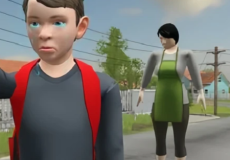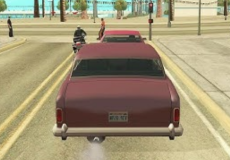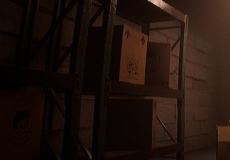

Crime Simulator
Crime Simulator is an open-world game that focuses on cause and consequence within an urban setting. The player takes the role of a character operating in a city where every action affects reputation, law enforcement response, and access to new opportunities. The experience revolves around decision-making, resource control, and environmental awareness. Rather than focusing on narrative, the game emphasizes systems that evolve through interaction, allowing players to experiment with risk, timing, and strategy to shape their progression.
Similiar games
Crime Simulator is an open-world game that focuses on cause and consequence within an urban setting. The player takes the role of a character operating in a city where every action affects reputation, law enforcement response, and access to new opportunities. The experience revolves around decision-making, resource control, and environmental awareness. Rather than focusing on narrative, the game emphasizes systems that evolve through interaction, allowing players to experiment with risk, timing, and strategy to shape their progression.
World and Structure
The city in Crime Simulator functions as a dynamic system with areas dedicated to different activities such as trade, transportation, and surveillance. Each district presents distinct levels of law enforcement presence and economic potential. The player begins with limited means, learning how to navigate the environment while avoiding detection. Time and location play critical roles—certain actions may only succeed during specific hours or under particular conditions. This structure creates a loop of observation, execution, and evasion that forms the foundation of gameplay.
Core Systems and Progression
The mechanics of Crime Simulator connect multiple layers of simulation:
· Interaction with urban systems such as shops, vehicles, and security networks
· A notoriety system that tracks reputation and law enforcement attention
· Resource management including money, tools, and disguises
· A mission structure with both planned and emergent objectives
· Adaptive AI that responds dynamically to player behavior
These systems operate continuously, ensuring that every action carries both reward and consequence. Progress is achieved not through scripted success but through efficient use of time and adaptation to changing conditions. The player must decide when to expand influence or reduce exposure to remain operational.
Growth and Decision-Making
As progression continues, access to better tools, vehicles, and hideouts allows more complex strategies. The player can specialize in different forms of activity—stealth, trade, or infiltration—depending on preference. Law enforcement adapts to repeated behavior, requiring variation in tactics. Failure does not immediately end the game but shifts conditions, forcing recovery and reassessment. The challenge lies in maintaining stability across multiple variables rather than pursuing perfection. Each success opens opportunities, while every mistake introduces new obstacles.
Design and Experience
Crime Simulator focuses on the relationship between freedom and consequence. The city acts as a living system that observes and reacts to the player’s behavior. There is no fixed path or narrative constraint; outcomes emerge from individual choices. The absence of a moral framework emphasizes cause-and-effect rather than judgment. Through its layered structure and adaptive mechanics, Crime Simulator transforms urban activity into a study of systems, where survival and progress depend on understanding rhythm, timing, and the interconnected nature of control within a reactive world.
Discuss Crime Simulator




















